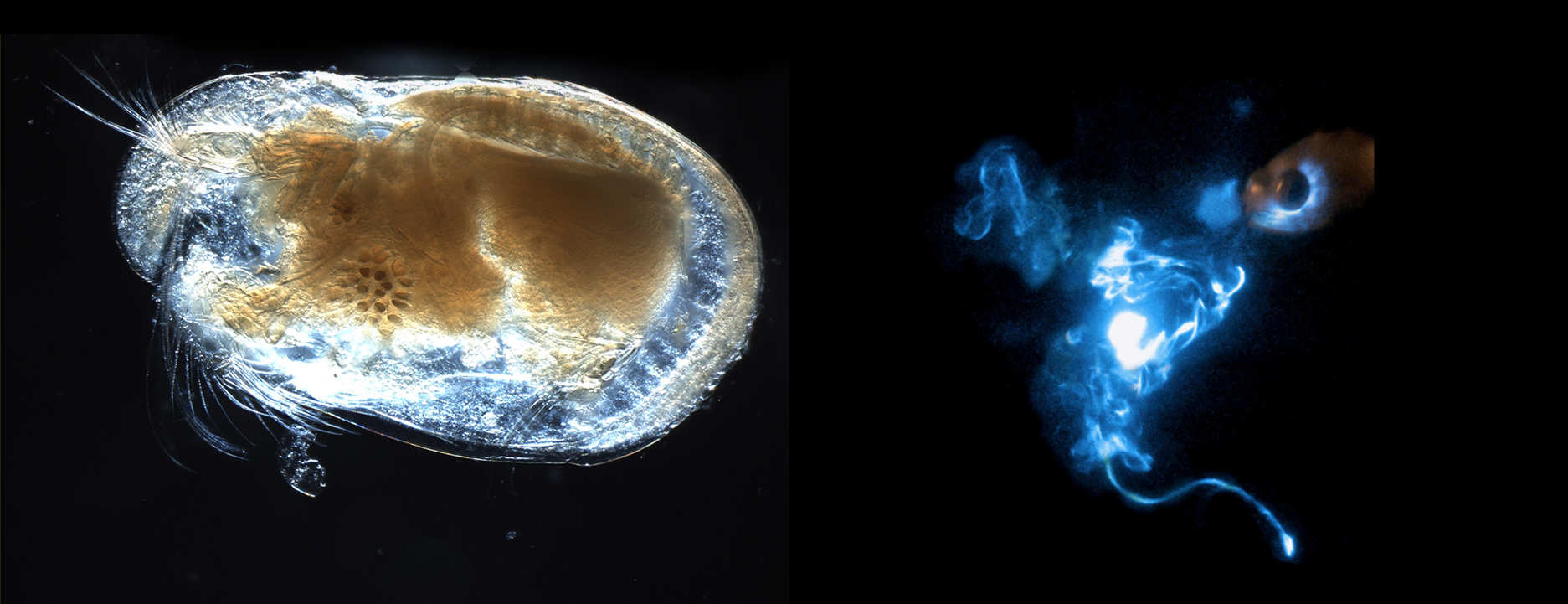Bioluminescence
Countless species have evolved to create their own light. Deep under the sea, creatures make their own light – Bioluminescence.
For animals that are unable to produce their own bioluminescence, they harness bacteria that allows them to. These spectral animals do not glow in the dark to see where they are going, they use light to communicate. Flashes of light are used to emit a welcome or as a warning for predators to stay away. Certain shrimp can vomit a bioluminescent irritant to incapacitate predators.
Bioluminescence is one of the most important communication forum on Earth because of the vast numbers of plants and animals that create light in order to communicate with one another to avoid predation, to attract prey and all kinds of interaction.
Siphonophores
This species of underwater creatures are carnivores
https://en.wikipedia.org/wiki/Siphonophorae > Modular concept
Siphonophores act as a colony that behaves like a single organism. One colony made up of multi-cellular individuals but function as one. Each unit are specially designed to perform a specific task/function.
Ostracods
Ostracods are small crustaceans. Some ostracods have a light organ in which they produce luminescent chemicals. Most use the light as predation defense, while some use the light for mating (only in the Caribbean). These ostracods are called “blue sand” or “blue tears” and glow blue in the dark at night. Their bioluminescent properties made them valuable to the Japanese during World War II, when the Japanese army collected large amounts from the ocean to use as a convenient light for reading maps and other papers at night. The light from these ostracods, called umihotaru in Japanese, was sufficient to read by but not bright enough to give away troops’ position to enemies.
Dinoflagellates
The Dinoflagellata are sometimes called Pyrrhophyta , meaning “fire plants”. This is because some species are capable of bioluminescence, in which chemicals made by the organism produce light in a chemical reaction. The dinoflagellates begin to glow as it gets dark, but will brighten considerably when agitated, such as in the wake of a ship. The phenomenon was first noted in the genus Noctiluca, which resulted in its name (“night light”), but the reaction is now known to occur in several marine species.
The chemical reaction itself occurs when the compound luciferin (a substrate chemically similar to a chlorophyll precursor), is oxidized by the enzyme luciferase in the presence of ATP and oxygen. This reaction and similar ones occur in a number of unrelated organisms, both prokaryotic and eukaryotic.
References:
http://www.ucmp.berkeley.edu/protista/dinoflaglh.html

Parapandalus
Parapandalus is a deep-sea shrimp that spews a bioluminescent cloud from its mouth when attacked. The burst of bright barf is enough to put would-be predators off their tea.
The squirting shrimp actually joins most light-emitting marine life in relying on blue light – the part of the spectrum that travels furthest through seawater. But the shrimp’s store of spew isn’t blue when it’s stored inside the crustacean’s body. When discharged into the water, a chemical compound in the fluid – luciferin – reacts with oxygen to produce light and the enzyme luciferase. The whimsical Lucifer prefix doesn’t denote anything particularly devilish, but rather the “light-bringing” aspects of these building blocks of bioluminescence.
In the case of Acanthephyra, the particular variety of chemical compound is used to confuse or distract predators. (In the video above, a similarly-equipped shrimp uses the defense to protest its appearance on Japanese television.) Where the bioluminescent material comes from, however, is not exactly clear. I asked Haddock if the shrimp produced the compounds themselves, or obtained it through the food they ate (perhaps smaller bioluminescent creatures.) He replied that some shrimp, such as a close relative of Acanthephyra called Systellaspis, have been found to synthesize the organic compounds necessary for bioluminescence inside their bodies. “The luciferase almost certainly originates in the shrimp,” Haddock said, “and the luciferin is likely to as well.”
References:
http://www.sciencemag.org/news/2012/09/vomiting-shrimp-and-other-deep-sea-creatures-light-ocean-floor
www.wired.com/2012/01/glow-little-spewing-shrimp-glow/
Haddock, S., Moline, M., & Case, J. (2010). Bioluminescence in the Sea Annual Review of Marine Science, 2 (1), 443-493 DOI: 10.1146/annurev-marine-120308-081028



